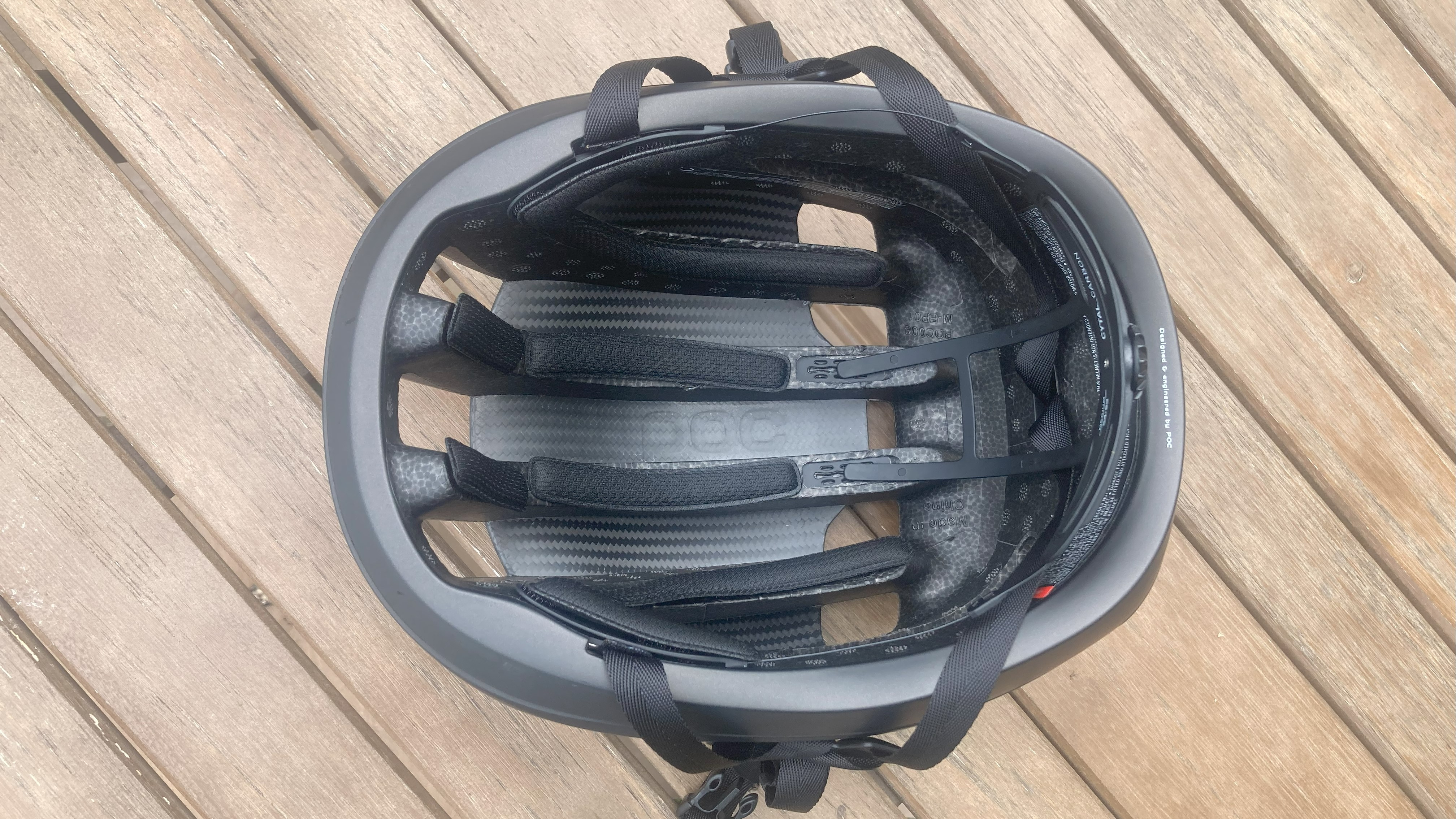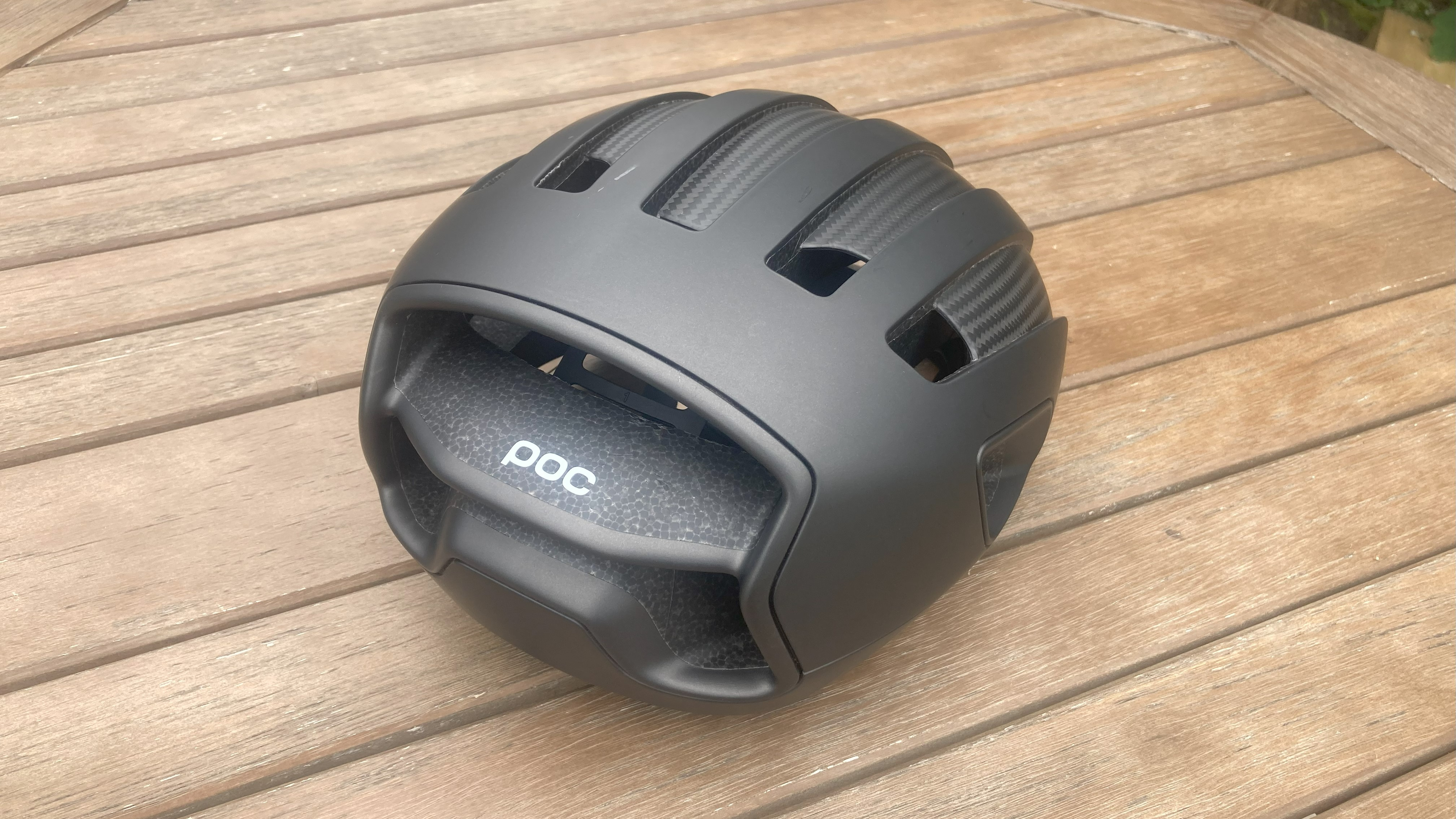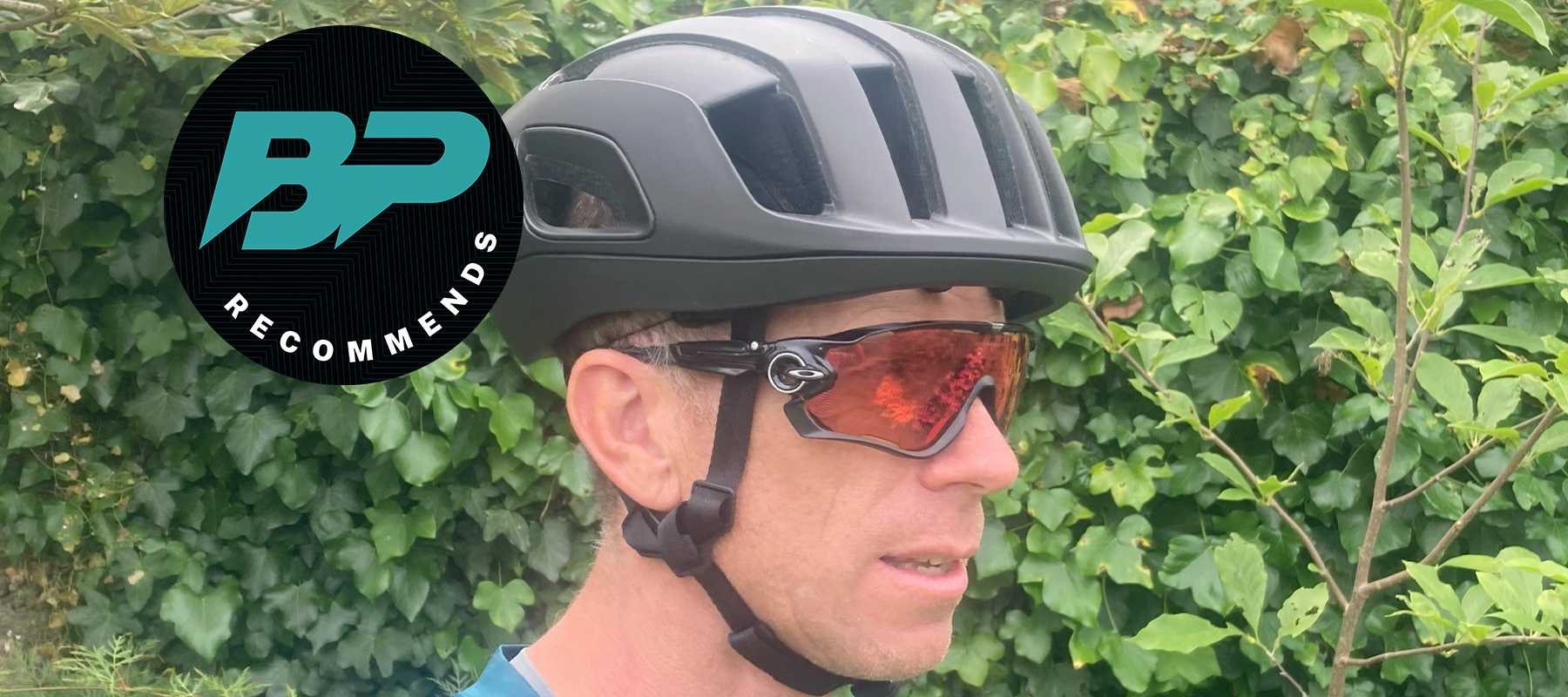Bike Perfect Verdict
A great fitting helmet that’s as ventilated as they come. Primarily designed for our roadie friends but is more than happy to be put to gravel or fast XC duties. Though the RRP is super premium.
Pros
- +
Incredible ventilation
- +
Premium look and feel
- +
Unique design stands out in a crowded market
Cons
- -
Styling won’t be to everyone’s taste
- -
Those huge frontal openings have a habit of catching bugs
- -
Considering the premium price, 274g (Size M) is not that light
Why trust BikePerfect
Swedish brand POC has been around since 2004 and has garnered a strong following in the road and off-road markets. POC specializes in helmets, eyewear, protection, and apparel, with a strong leaning towards design and innovation, it certainly isn’t afraid to push boundaries.
We recently received the brand's latest high-end ‘road’ orientated helmet called the Cytal Carbon (currently being used by the EF Pro Cycling team) and were keen to see if such a road-focused design can lend itself to fast gravel or XC riding. Take one look at the start line of an XC race or the pointy end of a gravel event, and you won’t see a MTB helmet peak in sight. Racers often choose what would normally be considered a ‘road’ helmet in the pursuit of saving weight and keeping cool – a skinsuit often completes the look. I haven’t gone as far as donning a skinsuit for this test, but I have managed to test the Cytal Carbon off-road, with some fast XC and gravel riding, to see how it performs.

Design and aesthetics
Even for POC, the Cytal Carbon has a unique look. The side profile of the Cytal Carbon has a pronounced shape that is unlike anything else I’ve seen and results in five huge openings at the front of the helmet. Clearly POC’s design intent for the Cytal Carbon was to prioritise ventilation and there’s even a hint of form over fashion, which is refreshing in sport where fashion can sometimes take precedence. The unique design element of the Cytal Carbon is the carbon wing which forms an integral part of the helmet’s structure to improve ventilation, aerodynamics, and structural integrity. The carbon wing is very much a functioning element of the design and isn’t simply there to look expensive. The wing covers a large portion of the top of the helmet, but when you look inside you begin to see the benefit of the wing design. The five large frontal openings direct air into huge uninterrupted channels that run over the top of the head. The wing has variable shape and thickness to increase air velocity over the head before exiting at the back of the helmet.

For impact protection, POC hasn’t gone with MIPS here but has instead relied on targeted and optimized EPS density to manage impact forces. POC also claims that the carbon wing, which has a Koridion foam core, also helps to transfer forces across the helmet. Reassuringly, the Cytal Carbon has achieved a top-scoring five-star rating from Virginia Tech’s independent testing.
The whole body is wrapped in a premium-looking Polycarbonate shell to protect the EPS core and help with durability. Foam padding runs along the channels over the top of the head. A separate brow pad is included in the box, which allows for a more traditional brow pad if you’re particularly prone to sweat dripping onto your glasses.
There is the usual cradle design at the back of the head with a micro-adjust ratchet dial to cinch things into place. The cradle can be moved through four height positions to achieve a customized fit.
POC has included some strips of grippy rubber material on the left and right front openings to help with sunglasses retention if you want to store your glasses there roadie style.
Three sizes are available; Small (50-56cm), Medium (54-59cm) and Large (56-61cm), and at the time of launch only the Black version being reviewed will be available.

Performance
Everything about the Cytal Carbon feels super premium, from the exposed carbon wing to where the shell blends seamlessly into the EPS core – all expected given the hefty price tag. I found the size medium fitted my 56cm head well, and the micro-adjust dial does an excellent job of cinching things down without causing any unwanted pressure points.
In the time that I’ve had the Cytal Carbon on test, I’ve used it on long XC and gravel rides and on some steeper terrain in my local woods. In all test conditions, I was impressed with how stable it felt and I didn’t detect any unwanted movement or vibration. At no point did I experience the tell-tale sign of the brow of the helmet knocking against my glasses. For what is ostensibly a road helmet, the Cytal Carbon has performed admirably when off-road.
The Cytal Carbon feels very light on the head and is at least 100 grams lighter than my more trail-focused riding helmets. The way the pads have been distributed on the inside also helps with the light feel on your head. It’s worth noting that this kind of road-focused helmet doesn’t provide the extended coverage at the back of the head or over your temples that a trail helmet provides. The perched-on top-of-your-head look and feel will also be a bit strange if you’re more familiar with deeper-fitting models.
The huge openings at the front of the helmet that create the slightly quirky look, are incredibly good at directing airflow over your head and I am in no doubt that this is the best ventilated helmet I’ve ever used, on or off-road. There is, however, one downside to these huge openings, in that they have a habit of hoovering up any flying insects in your path. If you’re lucky, the wee beasties will get directed out of the exhaust vents at the back of the helmet, but on a couple of occasions, I needed to stop and remove the helmet to let them escape.

Verdict
The excellent fit and superb ventilation result in a very unobtrusive riding experience. For gravel or XC racing in hot conditions, the Cytal Carbon would make my shortlist. It’s worth bearing in mind the head coverage is limited by virtue of being a road-focused helmet, and if you do go the route of using a road helmet, then there are lighter and less expensive options on the market. Essentially the POC Cytal Carbon is a premium product, that brings genuine innovation and provides incredible ventilation, albeit with a striking look and very hefty price tag.
| Attributes | Notes | Rating |
|---|---|---|
| Protection | Koridion core boosts strength, but road-biased design means less head coverage than an off-road model | ★★★★ |
| Performance | Very stable with excellent air ventilation | ★★★★ |
| Comfort | Lightweight and extremely comfortable results in a ‘forget it’s there’ experience | ★★★★★ |
| Value for money | Even accounting for the carbon wing, it’s very expensive | ★★ |
Tech specs: POC Cytal Carbon helmet
- Price: $400 / £360 / €400 / CAD $500 / AUD $575
- Weight: 274g (size Medium tested)
- Sizes: S, M, L
- Colors: Black

James has over 35 years’ riding experience, getting involved with the burgeoning mountain bike scene in the late eighties and hasn’t stopped riding since. He raced cross-country across the South West of the UK for many years and has even dabbled with a bit of road racing. Whether going up, down, steep or flowing, James loves it all. Living in North Devon, the hills aren’t exactly mountainous, but they are plentiful, and James likes nothing better than exploring the wilderness of Exmoor and Dartmoor, and the occasional guided trip to the Alps to get the real mountain experience.

